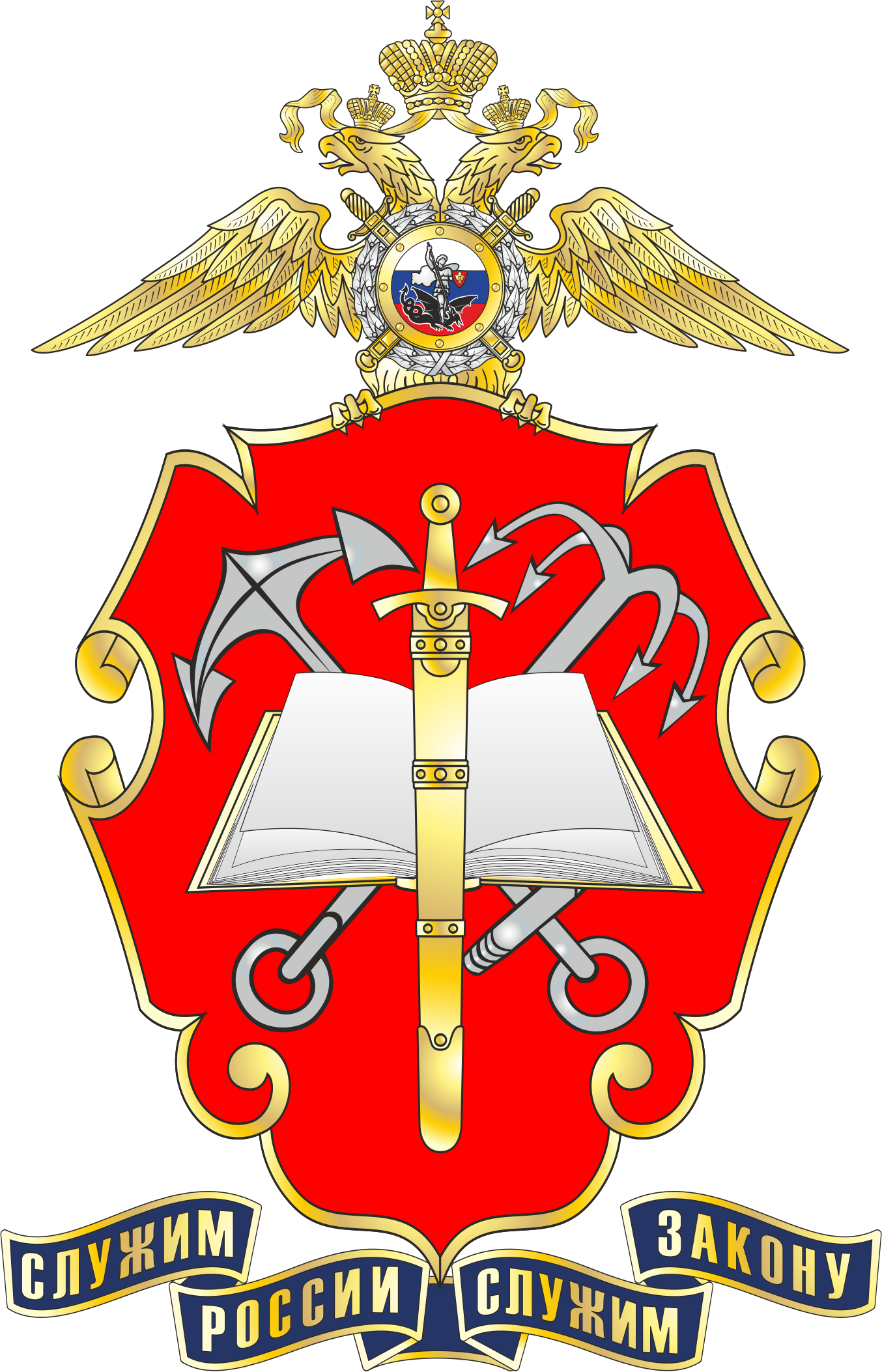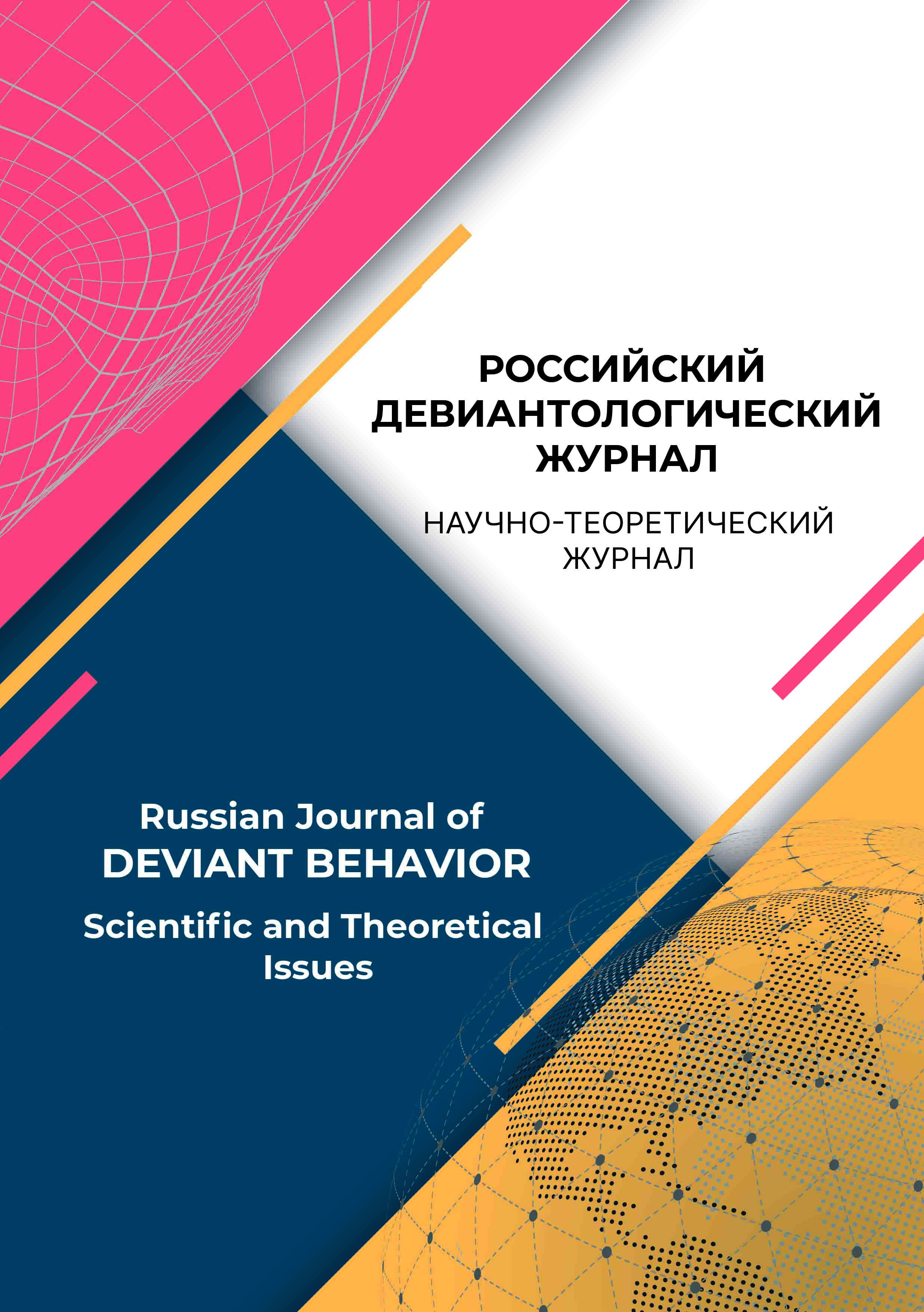Russian Federation
The problem of criminal infection of teenagers and youth is actualized in connection with their delinquent behavior. Domestic and foreign approaches to the explanation of criminal infection are considered, its features are characterized and the relationship with the criminal subculture is determined. The principles of countering its spread among minors serving sentences in correctional institutions of the Federal Penitentiary Service of Russia are substantiated. It is assumed that the correction of criminal infection can be carried out by the method of psychological training through the formation of universal human values in adolescents, increasing the meaning of life and developing a critical attitude towards the criminal subculture. In the framework of empirical research, this assumption is tested. The sample of the study is 99 adolescents serving sentences for committing acquisitive and acquisitive-violent crimes, all of them are male, cf. age 17.26 years, SD - 0.94 years. The assessment of the level of infection is carried out by a questionnaire on the criminal infection of minors. Correction is carried out by the method of role-playing psychological training in a subsample of adolescents with a high rate of criminal infection. A significant decrease in the criminal infection of the experiment participants was established in terms of the emotional and behavioral components of the criminal infection (U-crit, p ≤ 0.05). The results indicate the possibility of influencing the level of criminal infection of minors by the method of psychological training, which develops meaningful life orientations, time perspective and devalues the attractive aspects of the criminal subculture. Based on the results obtained, the ways and prospects of psychological correction of criminal infection are discussed.
minors, educational colonies, criminal infection, criminal subculture, meaningful life orientations, universal values, critical thinking
1. Bogdan, S. S., Lashkova, L. L., Lukiyanchina, E. V. (2019). Formirovanie kriticheskogo myshleniya na osnove universal’nyh kognitivnyh ustanovok, strategij i instrumentov. Science for Education Today, 9(2), 37-51. http://dx.doi. org/10.15293/2658-6762.1902.03
2. Gor’kovaya, I. A. (2020). Napravleniya profilaktiki protivopravnogo povedeniya podrostkov v Rossii. Psihologiya cheloveka v obrazovanii, 2(3), 265-276. https://doi.org/10.33910/2686-9527-2020-2-3-265-276
3. Dvoryanskov, I. V., Panfilov, E. E. (2018). Kriminal’naya subkul’tura nesovershennoletnih kak deviantogennyj faktor. V A. I. Dolgova (red.). Kriminal’nye realii, reagirovanie na nih i zakon (str. 225-233). Moskva: Rossijskaya kriminologicheskaya associaciya.
4. Zlokazov, K. V. (2022). Vliyanie kriminal’noj subkul’tury na vzaimodejstvie nesovershennoletnih pravonarushitelej s social’nym okruzheniem. Penitenciarnaya nauka, 1(57), 97-106. https://doi.org/10.46741/2686-9764.2022.57.1.010
5. Karpinskij, K. V. (2002). Psihologicheskaya korrekciya smyslovoj regulyacii zhiznennogo puti deviantnoj lichnosti: monografiya. Grodno: GrGU.
6. Krasnenkova, S. A., Markova, I. I. (2018). Social’no-psihologicheskie osobennosti zhiznennyh perspektiv delinkventnyh podrostkov. Vestnik instituta: prestuplenie, nakazanie, ispravlenie, 1(41), 111-117.
7. Menyaĭlo, D. V., Ivanova, Yu. A., Menyaĭlo, L. N. (2019). AUE - kriminal’noe molodezhnoe dvizhenie: sushchnost’ i sposoby rasprostraneniya. Vestnik Moskovskogo universiteta MVD Rossii, 3, 107-111. https://doi.org/10.24411/2073- 0454-2019-10145
8. Pastushenya, A. N. (2022). Harakteristika proyavleniya kriminal’noj sklonnosti lichnosti: interindividnoe opisanie. Rossijskij deviantologicheskij zhurnal, 2(2), 193-200. https://doi.org/10.35750/2713-0622-2022-2-193-200
9. Plotnikov, V. V. (2018). Perspektivy primeneniya teorii social’noj anomii R. Mertona v issledovanii problem sovremennogo obshchestva. Obshchestvo i pravo, 4(66), 170-174.
10. Pol’shikov, A. V., Budanova, E. A. (2019). Osnovnye napravleniya protivodejstviya rasprostraneniyu kriminal’noj sub¬kul’tury nesovershennoletnih v sovremennyh usloviyah. Vestnik Voronezhskogo instituta MVD Rossii, 2, 249-255.
11. Ryabkov, A. M., Stepanova, E. S., Muslumov, R. R. (2022a). Osobennosti rasprostraneniya kriminal’noj subkul’tury sredi nesovershennoletnih podozrevaemyh, obvinyaemyh i osuzhdennyh. Psihopedagogika v pravoohranitel’nyh organah, 3 (90), 291-297. https://doi.org/10. 24412/1999-6241-2022-390-291-297
12. Ryabkov, A. M., Stepanova, E. S., Muslumov, R. R. (2022b). Razrabotka i aprobaciya metodiki ocenki kriminal’noj zarazhennosti nesovershennoletnih podozrevaemyh, obvinyaemyh i osuzhdennyh. Prikladnaya yuridicheskaya psihologiya, 2(59), 77-86. https://doi.org/10.33463/2072-8336.2022.2(59).077-086
13. Semochkina, A. A. (2020). AUE - kak faktor kriminalizacii nesovershennoletnih i ih aktivnogo protivopostavleniya gosudarstvu i obshchestvu. Vestnik ekonomicheskoj bezopasnosti, 6, 154-158. https://doi.org/10.24411/2414-3995- 2020-10372
14. Halpern, D. (2000). Psihologiya kriticheskogo myshleniya: 4-e mezhdunarodnoe izdanie (perev. s angl. N. Mal’gina, S. Rysev, L. Caruk). Sankt-Peterburg: Izdatel’stvo «Piter».
15. Clemmer, D. (1940). The Prison Community. New York: Holt, Rinehart & Winston.
16. Kim, J., Lee, Y. (2022). Developmental Trajectories and Predictors of Delinquent Peer Association. Deviant Behavior, 43(12), 1523-1542. https://doi.org/10.1080/01639625.2021.1996214
17. Kurtenbach, S., Zdun, S., Howell, S., Zaman, M., & Rauf, A. (2019). Global Street Code. A Cross-cultural Perspective on Youth Violence. Deviant Behavior, 42(2), 171-192. https://doi.org/10.1080/01639625.2019.1658848
18. Powell, Z. A., Craig, J. M., Piquero, A. R., Baglivio, M. T., & Epps. N. (2021). Delinquent Youth Concentration and Juvenile Recidivism. Deviant Behavior, 42(7), 821-836. https://doi.org/10.1080/01639625.2019.1701622
19. Reid, S. E. (2017). The (Anti)Social Network: Egocentric Friendship Networks of Incarcerated Youth. Deviant Behavior, 38(2), 154-172. https://doi.org/10.1080/01639625.2016.1196962














